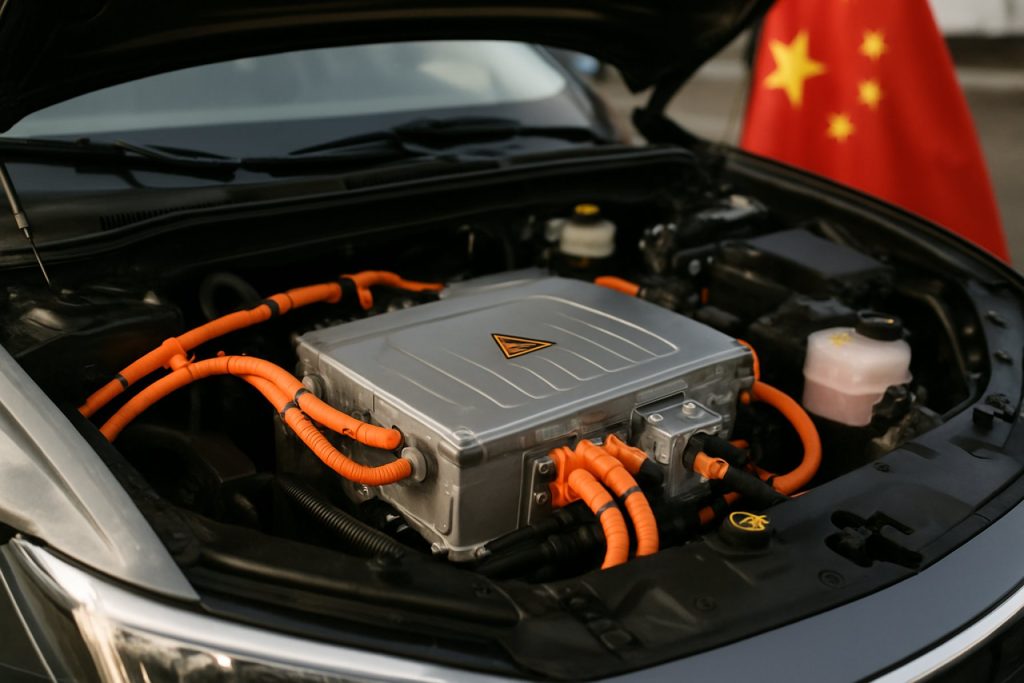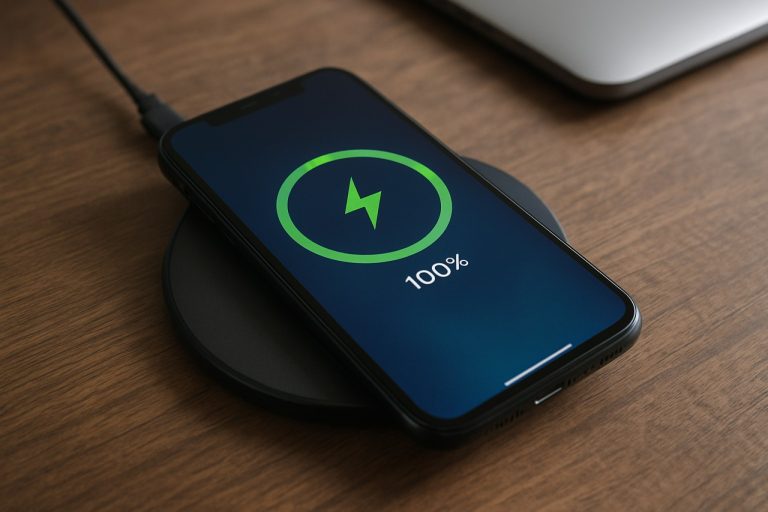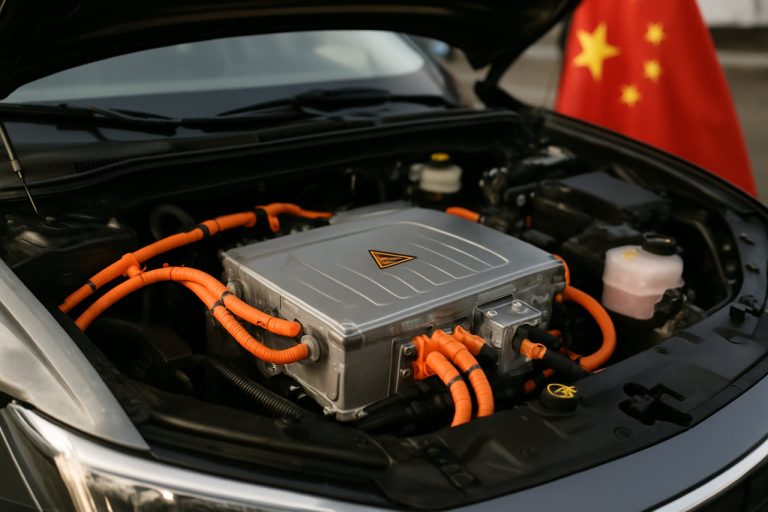
- The U.S. has imposed restrictions on 134 Chinese firms, including major battery producer CATL, disrupting electric vehicle supply chains.
- China manufactures over 70% of global lithium-ion batteries, making Western automakers heavily dependent on Chinese suppliers.
- Sanctions may result in production delays, higher EV prices, and slower adoption of clean energy technologies.
- Both China and the U.S. are escalating economic measures, raising risks for various industries reliant on critical minerals and batteries.
- American manufacturers are urgently seeking alternative battery sources, but restructuring the supply chain will take significant time and investment.
- The dispute highlights the challenges of achieving energy independence in a globally interconnected world.
The world’s highways hum quietly with the promise of electric vehicles, a technology that once symbolized hope for a cleaner, high-tech future. But a seismic shift in U.S. policy has sent shockwaves through the global EV landscape—threatening to upend the very supply chains that keep those silent engines running.
The American Gambit
Washington has blacklisted 134 Chinese firms with alleged ties to the military, enacting sweeping restrictions under Section 1260H. The target list includes CATL—the world’s undisputed leader in lithium-ion battery production. With CATL supplying power cells to giants like Tesla, Ford, and BMW, the ban lands not just as a political gesture but as a potential earthquake for the entire auto industry.
Bold rhetoric now eclipses earlier ambitions. The Biden administration’s vision of an electrified America—half of all new cars EV by 2030—now wobbles. Instead of accelerating toward a carbon-neutral future, domestic automakers face a logistical nightmare. CATL batteries, the beating heart of countless electric vehicles, cannot be swapped out overnight.
A Supply Chain in Jeopardy
Consider the scale of the disruption: China currently produces over 70% of the world’s lithium-ion batteries, with CATL commanding more than a third of that market. American and European automakers, lured by the efficiency and output of Chinese plants, have signed multi-billion-dollar contracts. But with the blacklist in play, these alliances hang by a thread. Production slowdowns loom. Prices for essential components could skyrocket, ultimately pushing EV prices beyond the reach of many drivers.
U.S. authorities insist sanctions fortify national security, pointing to potential risks from companies believed to be linked to Chinese military interests. Yet, robust evidence remains under wraps. Meanwhile, Chinese companies like CATL and tech behemoth Tencent challenge these moves in international legal forums. China’s government, calling the blacklist a political maneuver, hints at countermeasures—from restricting exports of rare earth metals to reconsidering business with American firms.
The High Stakes of Economic Warfare
This is no ordinary trade spat. It’s a contest for technological supremacy—one that reigns in far more than mere cars. Lithium, cobalt, and nickel power everything from cellphones to wind turbines. Without reliable, affordable batteries, the global race for green technology could falter. Rising tensions risk dragging down other industries dependent on China’s manufacturing muscle.
Analysts now warn of a domino effect: Car enthusiasts fear for the future of EVs, investors worry about diminishing returns, and climate advocates brace for setbacks in clean energy adoption. As the U.S. erects new barriers, China explores ways to tighten its grip on supply chains that the world relies on.
Where Does America Go From Here?
Yet the story is far from over. American carmakers, aware of their precarious position, are pouring resources into diversifying suppliers—investing in homegrown battery technologies and exploring alternatives in South Korea and Europe. Innovation is accelerating. But breakthroughs, whether from Silicon Valley labs or Tennessee gigafactories, take time.
The episode raises uncomfortable questions about global interdependence in an era where trade, technology, and security are inseparable. It also invites the world to reflect: Can any nation achieve energy independence in a networked world?
Key takeaway: The current clash between the U.S. and China over EV supply chains is more than a war of tariffs—it’s a high-stakes battle that could shape the fate of electric vehicles, the transition to green energy, and the world’s economic future. As the dust settles, consumers and industries alike must grapple with the new reality: in the drive for electrification, no one country holds all the keys.
Looking for more on economic policy and global tech battles? Discover breaking news and expert analysis at Bloomberg and The New York Times.
The Electric Car Shockwave: U.S.-China EV Battle Rewrites the Future of Green Driving
Unpacking the U.S.-China EV Supply Chain Crisis
The escalating standoff between the United States and China over electric vehicle (EV) supply chains threatens to reshape not only the automotive sector, but also the broader green technology revolution. While recent sanctions on Chinese battery giants like CATL have dominated headlines, there are many critical nuances and implications that haven’t been fully explored. This in-depth analysis delves into what the CATL ban really means for automakers, climate goals, and consumers, while providing practical advice and market insights you can act on today.
—
Additional Facts & Context: The Hidden Layers of the Battery Ban
1. Global Battery Dominance: Not Just CATL
– In 2023, six of the top ten EV battery manufacturers were Chinese, collectively controlling more than half the world’s production capacity (Bloomberg).
– South Korean firms like LG Energy Solution and SK On, and Japan’s Panasonic, have increased investments in the U.S., but their output remains limited compared to Chinese conglomerates.
2. U.S. Domestic Battery Production: Still in Early Stages
– U.S.-based gigafactories, including Tesla’s Nevada site and GM’s Ultium Cells, are still ramping up and face raw material shortages and technical hurdles.
– The U.S. government has allocated billions via the Inflation Reduction Act for battery R&D, but scaling local production to match demand could take 5-10 years according to McKinsey & Company.
3. Raw Materials: The Next Bottleneck
– China processes over 60% of the world’s lithium and holds a near-monopoly on graphite anodes, a key battery component.
– The U.S. currently imports more than 70% of its lithium and almost all its cobalt and nickel—materials vital for high-performance batteries.
4. Impact on Pricing: EVs Poised to Get More Expensive
– A sudden loss of Chinese supplier access could increase EV battery pack costs by 10-20% or more, making entry-level EVs less affordable for average consumers.
– Automakers are already warning of possible price hikes and production delays for upcoming models.
—
How-To Steps & Life Hacks: Navigating the New EV Era
For Consumers:
1. Lock In Current Incentives: Take advantage of existing EV tax credits and manufacturer discounts before potential price increases.
2. Research Supply Chains: Buyers can check which automakers use U.S., Korean, or Japanese battery suppliers in upcoming models to minimize supply disruption risks.
3. Consider Certified Pre-Owned EVs: Used models may be less affected by new tariffs and restrictions.
—
Real-World Use Cases & Industry Trends
– Automakers like Ford and GM are fast-tracking joint ventures with non-Chinese partners (SK On, LG) to localize battery production.
– Startups such as QuantumScape are pursuing solid-state battery breakthroughs, aiming to leapfrog today’s lithium-ion tech.
Market Forecast:
Analysts forecast a global battery shortage through at least 2027 if U.S.-China tensions continue, delaying the electrification of commercial fleets and mass-market vehicles.
—
Reviews & Comparisons: Battery Tech Across Borders
| Batteries | Typical Chemistry | Key Automakers | Pros | Cons |
|———–|——————|—————|——|——|
| CATL | LFP, NMC | Tesla, BMW, Ford | High efficiency & output | Impacted by U.S. sanctions |
| LG Energy Solution | NMC | GM, Hyundai | Stable North America presence | Less raw material security |
| Panasonic | NCA, NMC | Tesla, Toyota | Advanced tech, reliable | Smaller global footprint |
—
Controversies & Limitations
– Evidence Concerns: Experts argue that national security justifications often lack transparency, complicating international trust (The New York Times).
– Sustainability Risks: U.S. mining for battery materials could raise environmental concerns without robust regulation.
—
Features, Specs & Pricing: What’s at Stake?
– Typical batteries from CATL offer 300-500+ mile ranges per charge with industry-leading cycle lifetimes.
– Without these, American EVs may rely on older tech, with shorter ranges and slower charging capabilities.
—
Security & Sustainability: Is Independence Possible?
– Recent fires in battery plants and the environmental impact of mining highlight the need for strict safety and sustainability standards, regardless of origin.
– Complete supply chain independence is unrealistic in the near term—cross-border cooperation remains critical to meet global climate goals.
—
Insights & Predictions: What’s Next?
– Retaliatory Measures: China could restrict exports of rare earths, essential for EV motors, potentially escalating the trade war.
– Supply Chain Diversification: Expect a surge in U.S. and allied nation investments in battery recycling and alternative chemistries like sodium-ion.
– Delayed Green Transition: International Energy Agency warns that prolonged disruption could push back key climate milestones by 3-5 years.
—
Pros & Cons Overview
Pros:
– Drives investment in domestic and allied supply chains.
– Potential for breakthroughs in battery chemistry and recycling.
Cons:
– Short- to mid-term EV price hikes and slower production.
– Risk of escalating global trade tensions and climate setbacks.
—
Most Pressing Questions, Answered
Will the EV market crash in the U.S.?
No, but expect significant turbulence and short-term slowdowns as automakers adjust. Long-term growth depends on rapid supply chain adaptation.
How will these policies affect climate change goals?
Delays in battery availability and higher EV prices could slow emissions reduction targets unless alternative supply channels are established swiftly.
Can the U.S. catch up with China in battery tech?
With historic investment and innovation, the U.S. can make significant gains—but probably not within the next 3-5 years.
—
Actionable Recommendations & Quick Tips
– Buyers: Move quickly if considering a new EV to avoid upcoming price increases.
– Investors: Look to U.S.-based battery startups and recycling companies as future growth opportunities.
– Policymakers: Prioritize workforce development, streamline permitting for critical minerals, and build resilient, global partnerships.
– Automakers: Diversify supply contracts and ramp up R&D in next-generation batteries.
—
For the latest expert coverage on the U.S.-China tech race and EV market, check out trusted sources like Bloomberg and The New York Times.
—
KEYWORDS: EV supply chain, CATL ban, U.S.-China tech war, lithium-ion batteries, electric vehicles, green energy, battery innovation, clean energy transition, market trends, rare earth minerals, battery pricing, electrification, sustainable transportation, auto industry.



